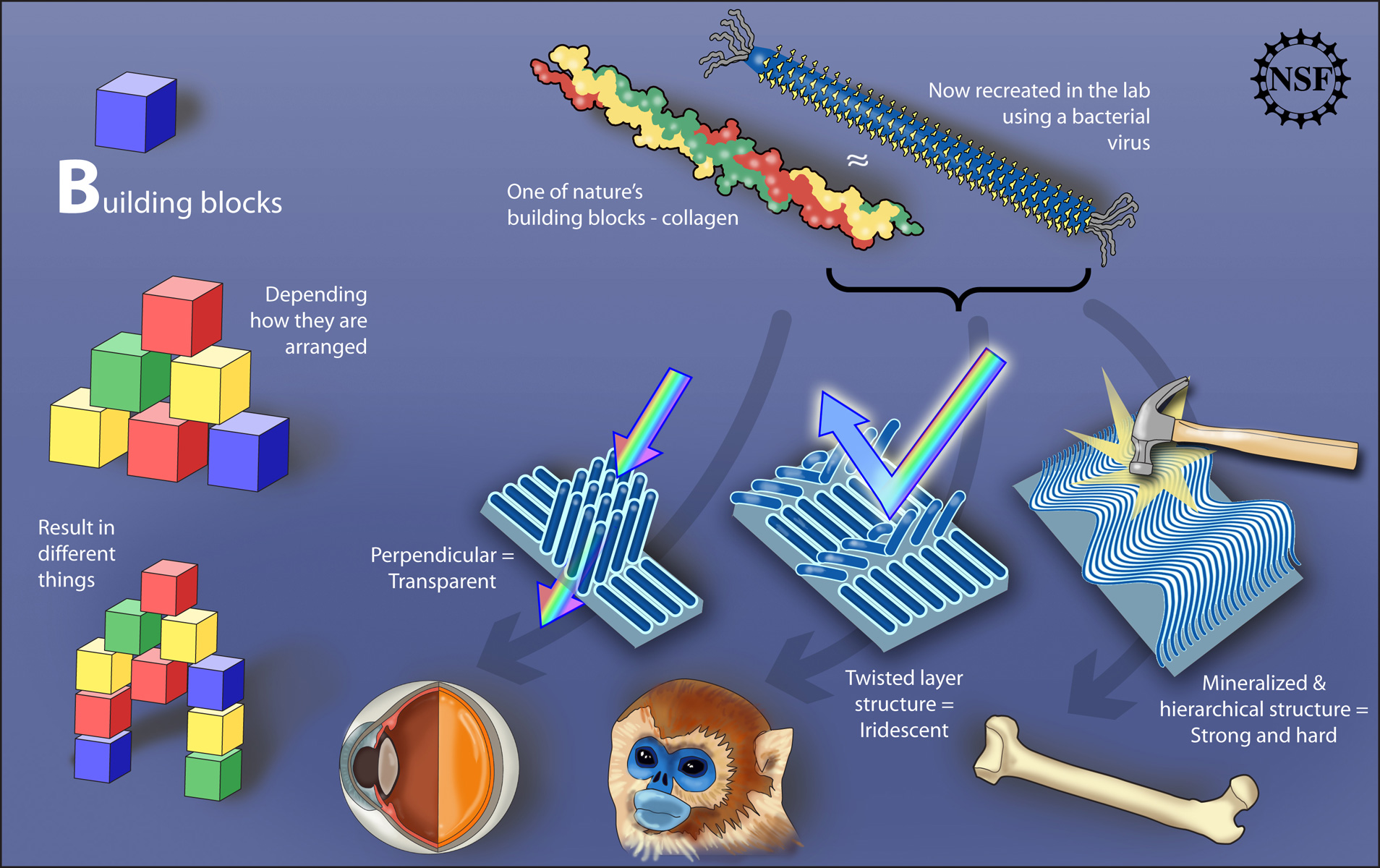These benign viruses self-assembled into hierarchically organized thin-film structures, with complexity that ranged from simple ridges, to wavy, chiral strands, to truly sophisticated patterns of overlapping strings of material. Each film presented specific properties for bending light, and several films were capable of guiding the growth of cells into structures with precise physical orientations.
The fundamental unit of the novel films is the bacteria-hunting virus, M13. In nature, the virus attacks Escherichia coli (E.coli), but in bioengineering laboratories, the virus is emerging as a nanoscale tool that can assemble in complex ways due to its long, slender shape and its chiral twist.
In a Berkeley laboratory, the viruses awere suspended in a buffered salt solution, into which the engineers dipped a thin substrate onto which the viruses can adhere. By varying the speed at which they withdrew the substrates from the virus-rich solution, the concentration of viruses in the solution, and the ionic concentration, the researchers were able to craft three distinct categories of films.

How the arrangement of molecular building blocks results in materials with unique properties, both in nature and in the laboratory. Credit: Zina Deretsky, National Science Foundation
The simplest film consisted of alternating bands of filaments, with the viral filaments in each band oriented perpendicular to the filaments in the adjacent band. Created using a relatively low concentration of viruses in the starter solution, the bands formed as the substrate rose out of the liquid with a repeated stick-slip motion.
To create films at the next hierarchical level of complexity, the researchers increased the concentration of viruses in the solution, which added more physical constraints to each filament's movement within its environment. As a result, the filaments bunched together into helical ribbons, with a handedness at a broader scale than the handedness of each individual virus.
With even higher concentrations-and in some experiments, greater substrate-pulling speed-the withdrawal yielded ever more complex, yet ordered, bundles of filaments that the researchers referred to as "ramen-noodle-like".
"Nature can dynamically change environmental variables when building new tissues to control an assembly process," says Woo-Jae Chung, the first author of the study in Nature. "The beauty of our system is that we can do the same. By altering various parameters we drive assembly towards specific structures in a controlled manner. We can even make different structures on the same substrate."




Comments